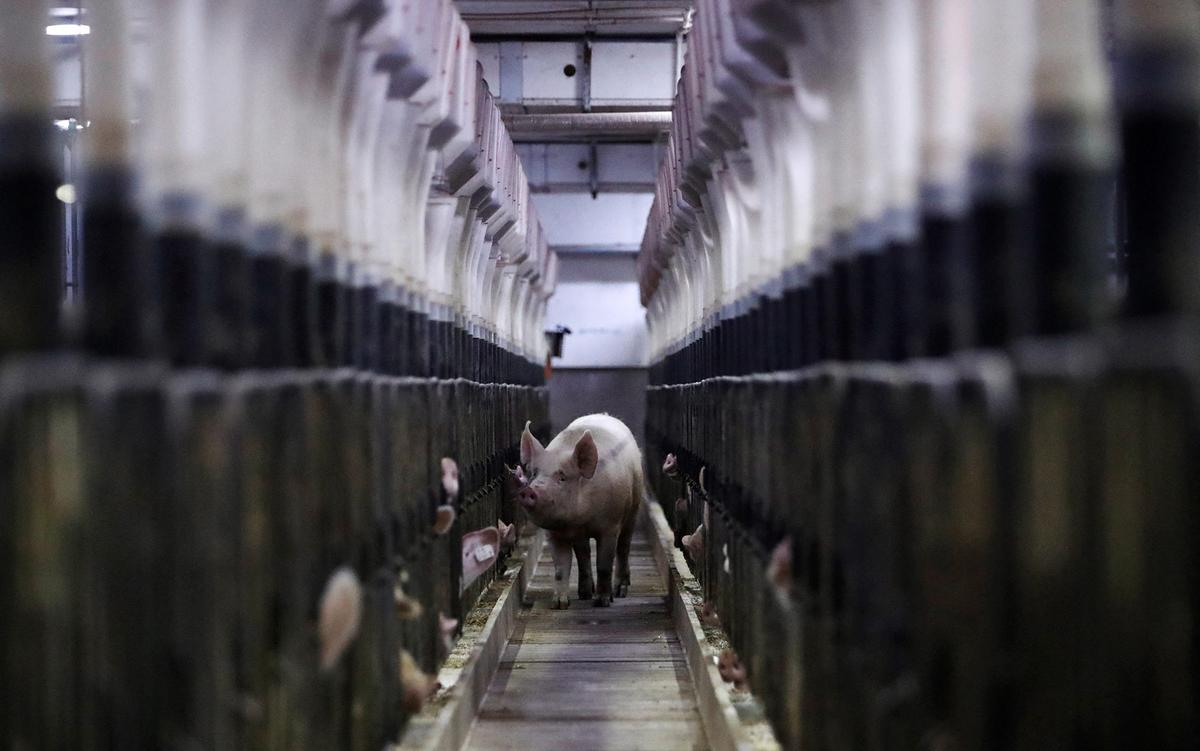Imagine a spacious, dim shipping container teeming with life forms. After sprinkling in some animal food waste, you step back. As per the company’s description, AI takes charge, overseeing growth and feeding, relieving the farmer of these tasks. The specifics of these creatures inside – are they your pets? That detail is inconsequential. No prior knowledge or experience in handling them is necessary. Professionals can remotely troubleshoot any issues that may arise. When it comes time for ‘harvesting’, there is no need for a traditional slaughterhouse; AI manages that process as well. Essentially, the animals exist as a “black box,” living and perishing within until completion.
Is this the future of agriculture? No, this scenario does not depict the “X1” insect breeding ground developed by the UK company Better Origin. Typically, the cultivation of larger animals like pigs, chickens, and fish is less technologically advanced. Traditional farms still dominate the landscape. However, with rapid technological advancements, a shift towards increased automation is evident.
To what extent should AI be involved in agriculture? The time for that conversation is now, before these advancements become set in stone. It is crucial to establish ethical standards that are reasonable and sustainable.
How is AI currently utilized? Various specialized programs are gaining traction, all sharing the common goal of integrating AI into a central control network to manage data from a range of interconnected sensors. These sensors, attached to different parts of animals’ bodies, monitor vital signs such as body temperature, metabolism, heart rate, sound, rectal temperature, and bowel movements. Additional sensors track behaviors like eating, rumination, drinking, and resting, detecting signs of distress or aggression. Animals can be identified through smart neck tags, promising personalized care. AI processes data from observations, images, and sounds to detect health issues and predict their progression. Another AI application monitors and adjusts environmental factors like temperature and carbon dioxide levels to prevent disease outbreaks, particularly focusing on severe illnesses like African swine fever. Animal GPS trackers and satellite imagery provide real-time location data, enabling farmers to monitor grazing patterns, manage pastures, and preserve soil health.
These recent innovations hold promise for enhancing animal welfare. Advocates of AI emphasize the potential benefits it offers in ensuring the well-being of farmed animals. By leveraging automated sensors, the dairy and beef industries can spare livestock from invasive procedures like temperature checks. Real-time location systems could allow animals in poultry and pork production to move freely and access food and water adequately. Health monitoring tools can aid in prompt treatment or humane euthanasia of sick or injured animals. Environmental sensors play a crucial role in predicting disease outbreaks, indirectly preventing suffering and premature death among animals. Proponents argue that investing in agricultural AI aligns with animal welfare goals and is economically beneficial, as disease outbreaks can have detrimental effects on profitability.
However, some of these purported benefits may be exaggerated. The notion of personalized AI care for individual animals may be unrealistic in industries where animals are rapidly replaced. It is essential to consider not only the immediate advantages but also the long-term implications of AI integration in farming practices. Farming involves trade-offs, balancing animal welfare with economic viability, which can pose ethical dilemmas.
It is critical to assess which farming systems can benefit most from AI integration. AI may enhance the efficiency of cage-based systems, which are known to raise welfare concerns compared to free-range alternatives. Automated welfare monitoring could particularly benefit cage-based systems, where identifying issues manually is labor-intensive and potentially hazardous. Manufacturers are already promoting high-tech poultry cages equipped with monitoring and control systems, enabling AI to analyze health data and predict overall productivity.
With the increasing reliance on AI in farming, concerns about animal welfare and ethical implications come to the forefront. The alignment between business efficiency and animal welfare is questioned, as the economic drive may prioritize profit over animal well-being. Striking a balance between technological advancements and ethical considerations is crucial to prevent a decline in animal welfare standards.
In conclusion, the ethical use of AI in agriculture requires careful consideration of its impact on animal welfare and the autonomy of farmers. Establishing clear ethical guidelines and accountability measures is essential to ensure that AI advancements in farming uphold animal welfare standards and do not compromise ethical principles. By implementing ethical principles that prioritize animal welfare and transparency, AI can potentially contribute to raising awareness of welfare issues and holding farming companies accountable for maintaining high welfare standards.










